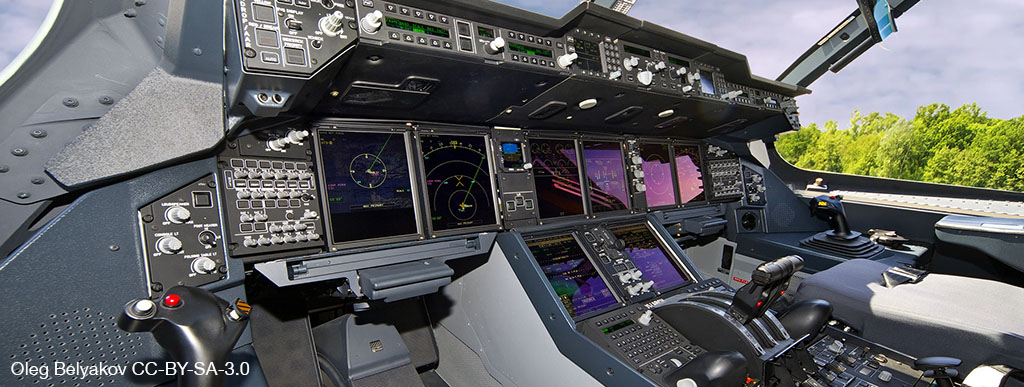The fly-by-wire system first started to be developed in the 1930s, in order to facilitate the pilot’s manoeuvres during flight. The aircraft’s levers were connected directly to the ailerons, elevator and rudder by means of steel cables, so that when the pilot moved the lever or pedals, the cables would pull on these control surfaces.
One of the concepts that has evolved and contributed most to the improvement of aircraft control and efficiency.
This method allowed little precision in the manoeuvres. With the advancement of aeronautics, aircraft became bigger and faster; consequently, control surfaces did too. This meant that pilots had to use a lot of force to move an aileron by pulling on a cable. This led to mechanical and hydraulic systems being devised, based on pulleys, gears and other elements, so that it would be easier to move the control surfaces.
Development continued throughout the twentieth century, and in the 1970s they began to replace the traditional manual controls of military aircraft with an electronic interface. With this advance, the aircraft’s movements became electronic signals, and it turned into a computer, receiving the pilot’s orders via a joystick that controlled all phases of flight. As well as greater precision, this meant minimised hydraulic systems and a noticeable reduction in the overall weight of the aircraft. In addition, advances in computing have made it possible to get smaller and more powerful computers on board every day.
Bombardier, along with NASA, incorporated a totally electronic fly-by-wire system with no mechanical or hydraulic backup into the Apollo Lunar Landing Research Vehicle (LLRV), an instructional prototype for astronauts to simulate moon landings in the late 1960s.
The US Army, as part of a multi-year experimental process, incorporated the full fly-by-wire digital interface into the Vought F-8 Crusader, which became the first fixed-wing aircraft to incorporate this technology.
Fly-by-wire technology was first incorporated into commercial aviation on the Concorde, although mechanical control for emergency systems was maintained for safety.
As manufacturers’ confidence in this technology increased, mechanical controls were gradually abandoned.
Airbus proposed a much more complex digital fly-by-wire in which the FCC (Flight Control Computer) system is active at all times, even when the pilot is flying manually. If the pilot tries to plummet the aircraft to the ground or perform a turn outside the limits of the aircraft, the FCC removes manual control from the pilot and autonomously stabilises the aircraft.
Boeing and Embraer on the other hand reduced the fly-by-wire activity, giving the pilot more effective manual control, and even allowing certain limits to be exceeded in flight.
The fly-by-wire concept did not stop there. Subsequently, the wiring and connection technology was optimised with the aim of further reducing weight and increasing the speed of information transmission, as well as its reliability.
It is undoubtedly a system that revolutionised aeronautics and contributed significantly to an increase in the comfort, safety and efficiency of aircraft.



